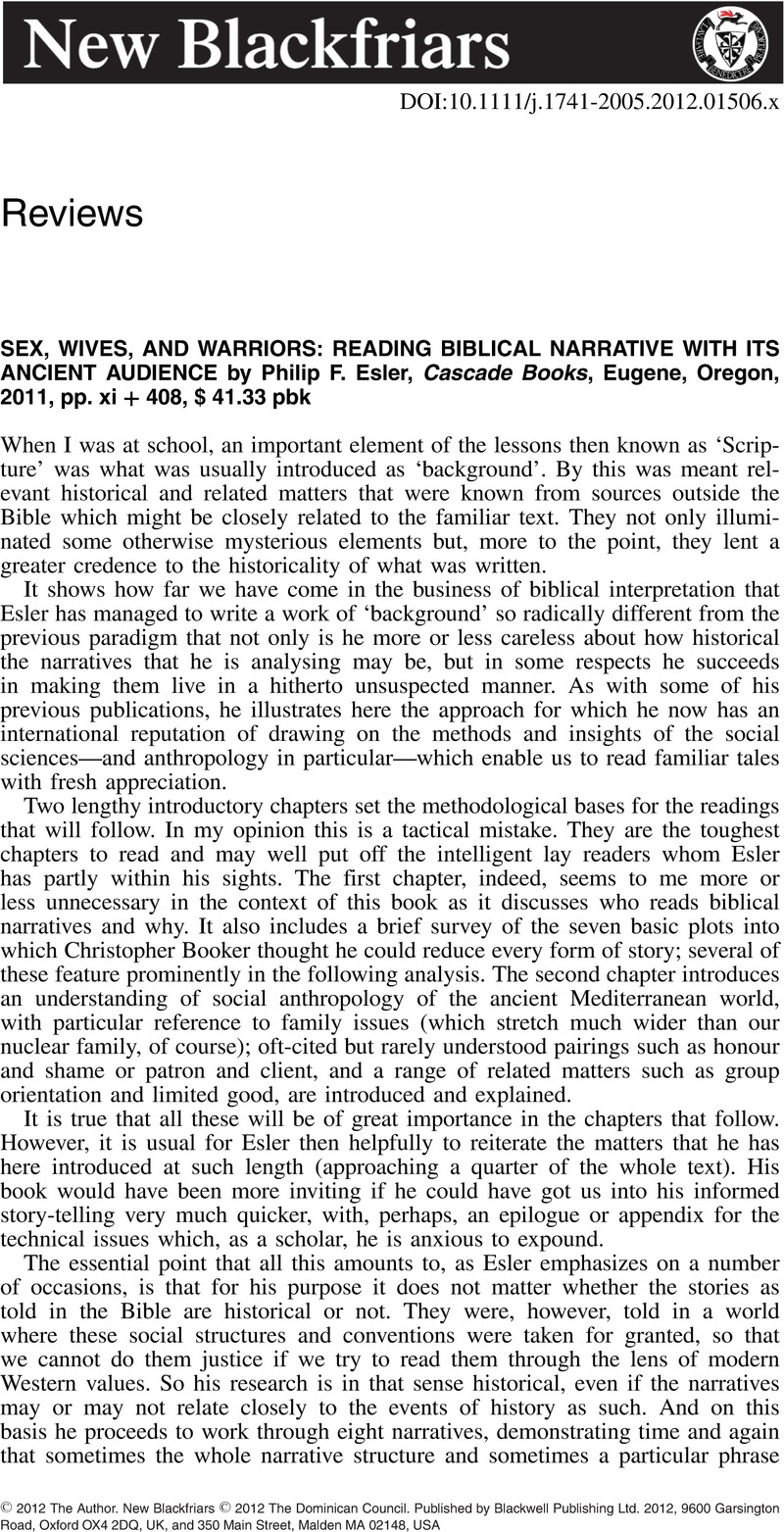No CrossRef data available.
Article contents
Sex, Wives, and Warriors: Reading Biblical Narrative with its Ancient Audience by Philip F. Esler, Cascade Books, Eugene, Oregon, 2011, pp. xi + 408, $41.33 pbk
Review products
Sex, Wives, and Warriors: Reading Biblical Narrative with its Ancient Audience by Philip F. Esler, Cascade Books, Eugene, Oregon, 2011, pp. xi + 408, $41.33 pbk
Published online by Cambridge University Press: 01 January 2024
Abstract
An abstract is not available for this content so a preview has been provided. Please use the Get access link above for information on how to access this content.

- Type
- Reviews
- Information
- Copyright
- © 2012 The Author. New Blackfriars © 2012 The Dominican Council


